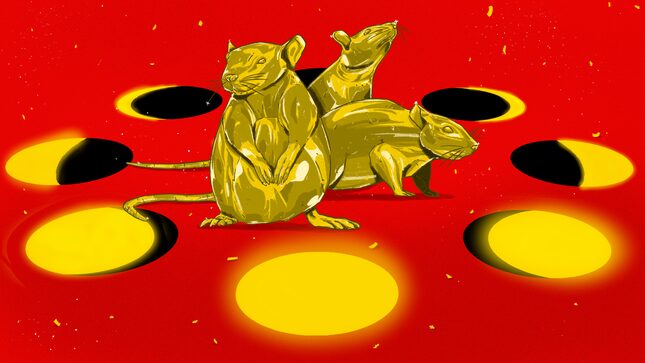An Ode to The Metal Rat, This Year’s Lunar Mascot
Latest
Illustration: Benjamin Currie (GMG)
This Saturday, January 25 is Lunar New Year, when we leave behind the year of the pig—and enter the year of the rat. Specifically, it’s the year of the metal rat. A zodiac year has never felt so appropriate, but it’s up against eons of anti-rat propaganda. Rats are mere vermin; we’re masters of the universe. Rats are disgusting; we yearn to be pure. Rats carry disease; we’re doing a detox. Rats have always been considered lowly. But aren’t we kidding ourselves if we think we’re above them?
In this year of the rat, it’s time for a rat reassessment.
I live in New York, so I am, quite literally, above rats. But I’m also below, next to, and generally surrounded by them, too. In New York, the rat is a constant companion. To walk down the street is to experience rats. To wait for the subway is to experience rats. To enter a building is to enter a fortress, a fortress where the walls may be teeming with rats. We see them. We hear them. Psychologically, we feel them. There they are every morning, promenading on the subway tracks. Busting out of trash bags, jogging along the gutters. Skittering around the edges of an abandoned construction site. Burrowing into the recycling, where they’re licking our pizza boxes clean.
This rat that inspires, the New York City street rat, is usually called a brown rat. It is not a rat that is easily deterred.
-

-

-

-

-

-

-

-

-

-

-

-

-

-

-

-

-

-

-

-

-

-

-

-

-

-

-

-

-

-

-

-

-

-

-

-

-

-

-

-








































